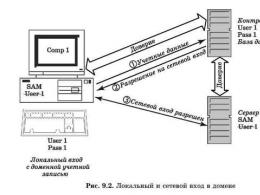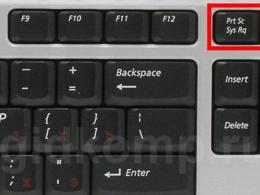"Stone Age. Choosing a CPU
1155 is a Socket that radically changed the balance of power in the PC chip segment. If up to this point there was relative parity between Intel and its eternal rival, AMD, then it was this product that in 2011 tipped the scales in favor of the first of them. Significantly redesigned semiconductor crystal architecture has allowed for phenomenal performance of the processor part, and an integrated video adapter has helped to build even more affordable entry-level PCs.
Platform announcement and its development
This hardware platform was relevant from 2011 to 2013. It replaced the connector and then it was planned to be replaced by the LGA 1150. Well, at the moment it is gradually being forced out of the market by the LGA 1151. Initially, the 6th chipset and the second generation of the CPU were released to assemble such PCs, referring to the architecture codenamed Core . A year later, the processor socket LGA 1155 received an update. After that, the socket allowed the installation of a third-generation CPU, and it was possible to purchase more functional motherboards of the 7th series. Also, this family of central processors could be installed in earlier motherboards, but for this it was necessary to flash an updated BIOS modification into them. The difference between the two generations of chips for this socket was that the manufacturing process for semiconductor chips was only changed. If earlier it met the 32nm standards, then the more recent family was already manufactured at 22nm and had 100-200 MHz higher clock frequencies.

Chipsets
Motherboards were most often based on the following chipsets:
Entry-level PCs were built around the H61 chipset. Moreover, this product was universal and perfectly suited for both generations of chips. Its level of functionality was minimal, but sufficient for the same office PCs.
More advanced mid-level system blocks were already assembled on the B67 and B75 logic sets. In this case, there were improved hardware specifications, and this even made it possible to include several discrete graphics accelerators in the PC.
And the most productive PCs were based on the Z68 or Z77 chipsets. Their main “trick” was the ability to flexibly configure the system, and it was even possible to overclock any PC component separately (for example, RAM).
Processors
As noted earlier, 2 generations of chips could be installed in Socket 1155 at once. The processors were identical in terms of design and had 1155 pins. The only difference was in the clock frequencies (for the 3rd family they were higher) and the technology for the production of silicon crystals (for more recent solutions it corresponded to 22nm). The premium segment was occupied by chips of the i7 family. They were designated 26XX or 37XX for the 2nd and 3rd generations, respectively. Also, the advantages of these CPUs include the ability to work in 8 computational threads, the maximum possible cache size (at the 3rd level, its size was 8 MB) and the highest frequencies.
Also, CPUs from this family with the “K” index had an unlocked multiplier, and they could be overclocked if they were properly equipped. Right behind the i7 were the products of the i5 line in terms of performance. They already worked in 4 data streams, had a reduced cache - 6 MB, and reduced clock speeds compared to flagship products. They were designated 25XX, 24XX and 23XX (2nd generation) and 35XX, 34XX and 33XX (for the 3rd generation). Even lower in performance were i3. They included only 2 hardware modules and 4 information processing threads. These products were designated 21XX and 32XX by analogy. The entry level in this case was occupied by Pentium (designated as G8XX and G2XXX) and Celeron (G16XX and G18XX).

prospects
Be that as it may, the LGA 1155 socket left a noticeable mark in the world of processor technologies. The socket made it possible to create even more productive computing systems. They are still relevant today. Only now, when assembling a new computer, it is more correct to pay attention to more recent Intel Core solutions. Socket 1155 has already become quite obsolete, and after it there was even a platform change. Now the most relevant products in this regard are those based on LGA1151. It will be right to choose them for assembling a new system unit.

Results
Of course, the processor socket with 1155 pins was a landmark in 2011. The socket at that time provided a phenomenal level of performance. But now, 5 years after the start of sales, it is outdated. Otherwise, this hardware platform for the most part allows you to solve even the most complex tasks. But when choosing a new PC, it is better to look towards more recent solutions from this manufacturer. Although they are more expensive, they are better in terms of performance and energy efficiency.
Not so long ago, one could observe an abundance of solutions based on the x86 architecture from various manufacturers. AMD, Cyrix, Intel, VIA, NEC, NexGen, Transmeta, SiS, UMC - they all produced integrated circuits suitable for a certain range of tasks. Today, we can note only two players on the market, which, however, need no introduction.
Despite the overly modest list of manufacturers of central processors for desktop systems, now the user's head is spinning with the number of models of finished devices. Celeron, Pentium, Core i3, Core i5, Core i7 - this is just a list of the lines of modern Intel solutions. How not to get lost in the maze of all these names?
Modern CPUs and Platforms
Intel Haswell (LGA1150)
Processors built on the basis of the Haswell microarchitecture are currently the crowning achievement of Intel. The chips are manufactured using a 22nm process technology. The architecture itself, in comparison with Ivy Bridge, received a number of significant changes and improvements:
- new instruction sets AVX2.0 and FMA3 are used;
- increased throughput of the cache;
- increased buffer and queues, including reordering buffer;
- the iVR voltage regulator is built directly into the processor;
- the number of launch ports has been increased from six units to eight, and new actuators have been added;
- added new energy-saving modes;
- increased speed of virtualization.
If you asked yourself this question, you are probably doing a system upgrade. Or pick up a new one. Or you were given a too detailed description of the already assembled system units, and you don’t know where to stop. In this case, knowledge is the best adviser, so let's see what lies behind the numerical designations with a one-one difference.
Usually, the transition to a new socket coincides with the appearance of a new line of processors. Intel is no exception in this case: first, LGA775 gave way to LGA1156, which, in turn, gave way to LGA1155. To date, motherboards for Intel processors are available with LGA2011, LGA1150 sockets, and LGA1155 is becoming a thing of the past. However, most home systems on Intel processors are still assembled on the latter.
Definition
Socket LGA1156- a socket on the motherboard designed for Intel processors labeled Core i3, i5, i7, Pentium G69x0, Intel Celeron G1101 and Intel Xeon X,L (Clarkdale and Lynnfield cores). Supports dual-channel DDR 3 memory, PCI-E 2.0 bus, as well as a graphics core integrated into the processor. LGA1156 motherboards were launched into production in 2009.
Socket LGA1155- a connector on the motherboard that replaced the LGA1156, and designed for Intel Sandy Bridge and Ivy Bridge processors. LGA1155 motherboards were launched into production in 2011.
Comparison
Physically, both sockets are very similar to each other, they are almost indistinguishable in appearance. The abbreviation LGA (Land Grid Array) itself speaks of the design features of the processor package - the presence of a matrix of contact pads. The processor pins in this case are soldered in a socket on the motherboard. This allows processors to be transported and installed without additional security measures. Fastening provides the clamping lever.
We can say that the difference between the two sockets is in the name, or rather, in its numerical expression. 1156 and 1155 are the number of pins. Another design difference of the LGA1155 is that the key notch is located to the right of the conditional central axis of the case - instead of 9 mm, the distance is 11.5 mm. This was done so that dexterous hands would not try to make friends with the LGA1156 socket with a Save Bridge family processor, for example.
Despite the physical similarity of the sockets, there is no cross-platform in our case and cannot be. Under no circumstances can you transfer processors from one to another. Technologically, the difference between LGA1155 and 1156 is the support of the first DMI 2.0 bus, which is faster than DMI. In practice, this gives a high bandwidth "bridge" between the processor and the chipset, which provides support for new controllers.
Despite the difference between the processors installed in the sockets (and, as a result, different heat dissipation indicators), the cooling systems for the LGA1155 and 1156 are fully compatible, so when switching from one platform to another, there is an opportunity to save at least on this. With the replacement of some technologies with others (even with such minor differences), outdated options quickly leave the market, so today it is almost impossible to find motherboards with an LGA1156 socket on sale. Intel stopped producing processors for this socket in 2012, so technical support is not provided. However, the market share of LGA1155 is also decreasing.
Findings site
- LGA1155 appeared in 2011, LGA1156 - in 2009.
- LGA1156 is designed for Core and a number of other processors, LGA1155 for Sandy Bridge and Ivy Bridge.
- LGA1156 has one more output pin.
- The key recess of the LGA1155 is located to the right.
- LGA1155 supports DMI 2.0 bus (ensures adequate operation of Sata 3.0 and USB 3.0).
- LGA1155 is a newer variant, LGA1156 is obsolete and discontinued.
Intel with built-in DDR-III memory controllers (two channels) and PCI-E 2.0 bus (16 lines), as well as support for processors with an integrated graphics adapter, replacing Socket LGA1156 and Socket LGA775. In the future, up to eight cores will be released for this connector.
What is Socket LGA1156?
Socket for Intel desktop processors with built-in DDR-III memory controllers (two channels) and PCI-E 2.0 bus (16 lanes), as well as support for processors with an integrated graphics adapter, replacing Socket LGA775. Currently, the Core i3, i5 and i7 8XX families are being produced for this processor socket, as well as cheap processors under the Pentium brand.
What is Socket LGA1366?
Socket for new Intel desktop and server processors with built-in DDR-III memory controllers (three channels) and QPI bus (one channel for desktop processors and two for server processors), replacing both Socket LGA775 (for high-performance single-processor systems) and Socket LGA771. Currently, processors of the Core i7 9XX and Xeon 55XX families are being produced for this processor socket. The key difference between the latter is the support for dual-processor configurations.
What is the difference between Socket LGA1155 and Socket LGA1156 and processors for them? Are they compatible with each other?
Despite the external similarity of the connectors, they are completely incompatible with each other, i.e. LGA1155 processor can not be installed in LGA1156 board and kit from, moreover, this is mechanically prevented by a different arrangement of the keys in the connector. Also, the main difference between LGA1155 processors and chipsets compared to LGA1156 counterparts is twice the faster version of the DMI bus that connects to the chipset, which eliminates the bottleneck when using SATA 6Gb / s and USB3.0 controllers.
What is the difference between Socket LGA1156 and Socket LGA1366 and processors for them? Are they compatible with each other?
An LGA1156 processor cannot physically be installed in an LGA1366 socket and vice versa, despite the similar processor names for both sockets.
The key differences of all three sockets are summarized in the table:
What memory can be used with Socket LGA1155, Socket LGA1156 and Socket LGA1366 processors?
Since the memory controller is integrated into the corresponding processors, support for various types of memory also depends on the type installed, currently all boards and processors with these sockets are designed to work with DDR-III memory, the maximum officially supported frequency of modules depends on the specific processor model However, some patterns are observed - all LGA1155 and LGA1156 processors (Core i5 and Core i7 8XX) and all LGA1366 Core i7 processors support only unbuffered ("regular") DDR-III up to PC10600 (1333MHz), and Xeon processors for Socket1366 in combination with the corresponding boards also support ECC and ECC + Registered modules, while unbuffered modules also work in them.
To achieve optimal performance, the number of memory modules in LGA1155 and LGA1156 systems should be a multiple of two, in a single-processor LGA1366 system - three, and in a dual-processor system - six.
What coolers can be used with Socket LGA1155, Socket LGA1156, and Socket LGA1366 processors?
The cooler mounts for LGA1155 and LGA1156 sockets are identical and not compatible with LGA1366, and both of these types of mounts are not backwards compatible with any of the previously released sockets. However, for some expensive coolers, mount kits have been released that allow them to be mounted on such connectors, and most of the new universal coolers already support such connectors.
The list of compatible coolers in the NIX nomenclature can be found here: , .
What power supplies can be used with Socket LGA1155, Socket LGA1156 and Socket LGA1366 processors?
The boards with these sockets do not impose any specific requirements on the PSU, the selection of the PSU is carried out according to the same principles as for the Socket LGA775 and Socket LGA771 systems based on the requirements of a specific configuration.
How does the performance of processors with Nehalem architecture for Socket LGA1156 and Socket LGA1366 compare with each other and with processors with Intel Core architecture for SocketLGA775?
As a rule, with the same nominal clock speed and number of cores, LGA1366 processors are slightly faster than LGA1156 processors, but both are significantly (up to 40%) superior to their LGA775 predecessors from the Core 2 Quad family.
How does the performance of Nehalem processors for Socket LGA1156 compare to those of Sandy Bridge processors for Socket LGA1155?
As a rule, with the same nominal clock speed and number of cores, LGA1155 processors are about 15-17% faster than LGA1156 processors due to architectural differences themselves.
For the first time, Sandy Bridge processors with LGA1155 appeared in 2010, replacing not the most successful processors with an LGA1156 socket and a Lynnfield core. The new processors had greater performance and, at the same time, heated up noticeably less. Models with an unlocked multiplier made it possible to achieve record frequencies at the time of release. In 2012, processors with the Ivy Bridge core, using the same LGA1155 processor socket, saw the light. These chips belong to the third generation and differ, first of all, in support of PCI-E version 3.0. Thanks to this, those who supported them as quickly as Sandy Bridge gained popularity. Video card manufacturers also contributed to this by releasing top-end solutions with such an interface. For the sake of objectivity, it should be noted that the third generation processors had less overclocking potential compared to the second generation.

Socket LGA1150

Socket LGA1155
The fourth generation processors, Haswell, replaced Ivy Bridge. They brought with them not only a new level of performance, but also a new processor socket. The graphics integrated into the processor has undergone a major upgrade, and the performance has reached values that allow you to play simple games quite comfortably. Almost simultaneously with the fourth generation, fifth-generation processors with the Broadwell core were released, which, at lower power consumption, provide performance similar to Haswell.
The presented table allows you to compare the listed processors:
| Specifications | LGA1155 | LGA1150 | |||
| Processor core | Sandy Bridge | Ivy Bridge | Haswell | Broadwell | |
| Clock frequencies, MHz | 1400-3800 | 3100-3800 | 2000-3500 | 2800-3300 | |
| Support PCI Express (Version) | 2.0 | 3.0 | 3.0 | 3.0 | |
| External L2/L3 cache size, KB | 6144-8192 | 6144-8192 | 6144-8192 | 4096-6144 | |
| Maximum number of instructions per clock | 5x4 | 5x4 | 7x4 | ||
| Supported memory types | DDR3, 2 channels | DDR3, 2 channels | DDR3, 2 channels | LV DDR3, 2 channels | |
| Supported memory bus frequencies | 800, 1066, 1333 MHz | 800, 1066, 1333, 1600 MHz | 800, 1066, 1333, 1600 MHz | 800, 1066, 1333, 1600, 1866 MHz | |
| Embedded video (name) | Intel HD Graphics 3000 or Intel HD Graphics 2000 | Intel HD Graphics 4000 or Intel HD Graphics 2500 | Intel HD Graphics 4600 or Intel HD Graphics 4400 | Intel® Iris™ Pro Graphics 6200 | |
To compare chipsets that support these processors, let's take older models whose names start with "Z"
| Specifications | LGA1155 | LGA1150 | |||
| Chipset | Z68 | Z77 | Z87 | Z97 | |
| Maximum number of PCI Express slots | 8 slots using up to 8 PCI-E 2.0 lanes | 8 slots using up to 8 PCI-E 2.0 lanes | 8 slots using up to 8 PCI-E 2.0 lanes | ||
| Number of USB ports | 14 | 10 | 14 | 14 | |
| USB 3.0 support | Not | 4 ports | 6 ports | 6 ports | |
| SerialATA support | 2 channels SATA 6Gb/s + 4 channels SATA 300 | 6 channels SATA 6Gb/s | 6 channels SATA 6Gb/s or 4 channels SATA 6Gb/s and 1 M.2 connector | ||
| SSD caching technology | Intel Smart Response Technology | Intel Smart Response Technology | Intel Smart Response Technology | ||
To compare performance, consider 3 older processors of the second, third and fourth generations. The fifth generation does not make much sense to consider, since these CPUs are not created for high performance, but to improve performance per watt. Therefore, they are inferior in speed to fourth-generation processors.
| 2700K | 3770K | 4790K | |
| FutureMark 3DMark Vantage Performance CPU | 24037 points | 26338 points | 31170 points |
| Cinebench R11.5 SMP Rendering Benchmark | 6.97 points | 7.57 points | 9.09 points |
| 104.51 FPS | 104.38 FPS | 104.71 fps | |
| 7-Zip 9.13b x64 CPU Benchmark Benchmark Test | 19989 points | 21828 points | 24270 points |
| x264 Encoding 3.0 720p, 2-pass | 36.84 fps | 40.92 fps | 49.94 fps |
| Intel Linpack x64 Solving a system of 10,000 equations | 40.8741 Gflops/sec | 49.8957 Gflops/sec | 54.1917 Gflop/sec |
The test results show how the performance of processors has increased from generation to generation. The exception is the gaming test based on the game Crysis Warhead. This is due to the fact that this game uses only one processor core in operation, and the main performance criterion is the clock frequency. It can be seen that the Core i7-3770, as having the lowest clock speed, showed minimal performance. All old games behave in a similar way, so if you like World of Tanks or Crysis, then changing the second or third generation processor is pointless. For modern games such as GTA 5, The Witcher 3 or Project CARS, a newer processor will provide better performance. For tasks such as photo and video editing, mathematical calculations, and more, switching from to makes sense. Especially considering that modernization will require the replacement of only and. The remaining components can be used from the old system.
Let's turn to energy consumption. Consider the Core i7-2700K, Core i7-3770K, Core i7-4790K processors installed in a system where the Radeon HD 7970 video card is the second noticeable power consumer. The processor load was provided by a performance test built into the 7z archiver and capable of loading all processor cores in system
The power consumption of the processor depends on its heating. Those. the more the processor consumes, the better it needs to be cooled. Accordingly, the cooling system of a more economical processor, other things being equal, will be quieter. The power consumption table shows that the second generation Core processors have the highest power consumption. With processors of the third and fourth generation, everything is a little more complicated. The tested processors showed a funny result: in idle, the Core i7-4790K turned out to be better, and under load, the Core i7-3770K. However, it should be borne in mind that modern processors rarely work at full load, so it is important that the CPU can effectively reduce power consumption. Based on this, it can be argued that in non-extreme operating modes, the Core i7-4790K will have less power consumption.






